Horrific Inquiry: THE MUMMY (1932)
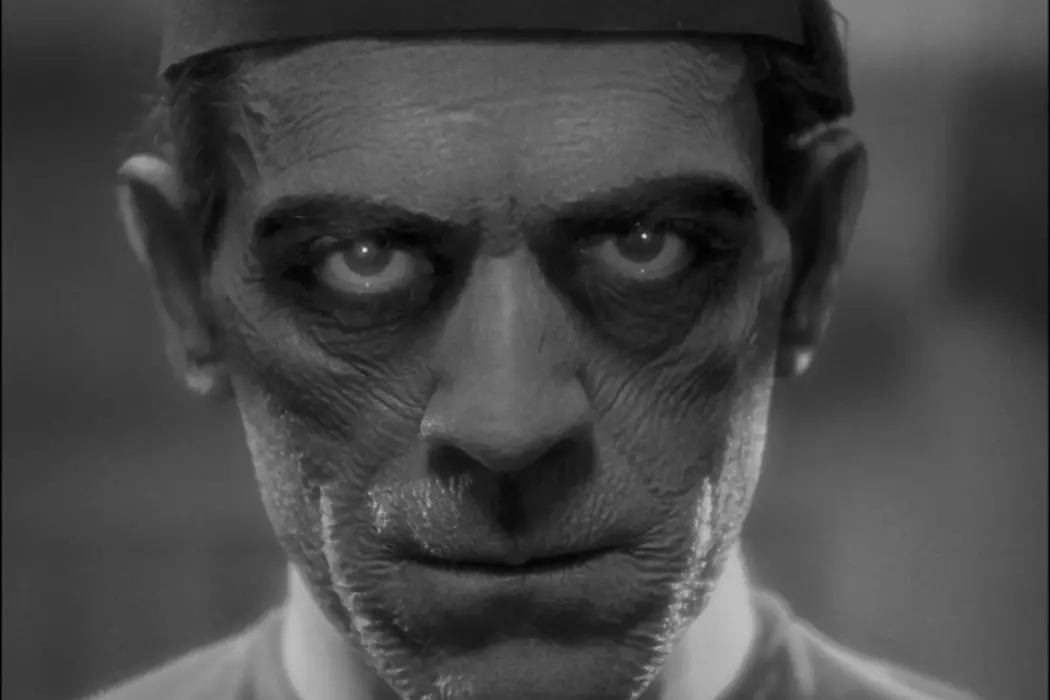
Stephanie Archer is 39 year old film fanatic living in…
Welcome back to the newest, and at times goriest, column here at Film Inquiry: Horrific Inquiry. Twice a month, I will be tackling all things horror, bringing two films back into the spotlight to terrify and frighten once more. And occasionally looking at those that could have pushed the envelope further. Join us as we dive deep into the heart of horror, but warning, there will be spoilers.
In the early 1930s, before the Production Code began to limit the reaches of cinematic horror, Universal Studios released what is lovingly referred to as the Creature Features. Taking classic works of literature and bringing them to life before our eyes, early horror gems were born to terrify and amaze, the experimentation of story and craft pushing the limits of cinema. But it is not just literary classics that would bore the horrific brilliance of the early 1930s, but modern-day advancements and discoveries as well.
Following the successful releases of Dracula and Frankenstein a year earlier, Universal Pictures found its inspiration in the immense interest that followed the discovery of the tomb of King Tutankhamen (King Tut for short) in 1922. As droves of archeologists plunged into the desert void in hopes of their own discoveries, Universal had found itself its own potential gold mine. And while Karl Freund’s The Mummy was not the first film to tackle the lore and mystery of mummies, it would be the most influential, spawning remakes and reboots in the years that would follow.
Killer Opening
In a nod to its own inspiration, The Mummy opens in the desert at an onsite Field Expedition for The British Museum in 1921. As the camera settles on a door, after taking in the landscape, viewers are brought inside, meeting three varying levels of ambitious archeologists. As their experience mirrors their restraint of ambition, its wide shot allows for audience members to take in the room – as well as the recent discoveries they have made.
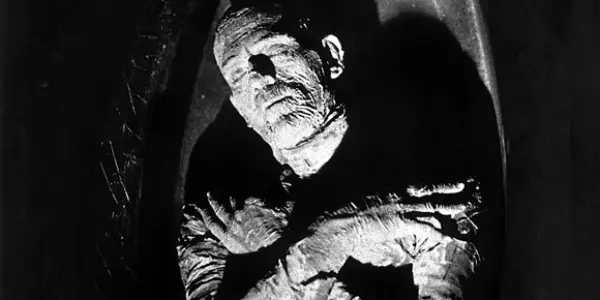
While cataloging their new treasures (in order of discovery), the head of the expedition Sir Joseph Whemple (Arthur Byron) and his friend Dr. Muller (Edward Van Sloan) leave the tablets they are transcribing to examine the mummy they had discovered earlier in an unmarked grave. It is in this moment viewers are given a close-up of the mummy, taking in the discovery with the archeologists. Creating a present feeling and grounding the audience into the narrative, the camera follows their dialogue, taking in the eerie nature that surrounds the discovery. As noted by Dr. Muller, the man was not traditionally mummified, evidence leading them to conclude he was buried alive.
Yet, it is the inscriptions on the inside of the tomb that has been shaved off that give the first air of foreboding within the film. With little understanding of why this occurred, both men conclude someone did not want this man to find peace here or in the afterlife. While this presents itself as a mystery, heightening the importance of the mummy’s discovery, they each return to their cataloguing, assistant Ralph Norton (Bramwell Fletcher) remaining anxious to move along to the mysterious wooden box they had discovered earlier.
Giving in to the young assistant’s pleas to break protocol, Whemple and Muller begin opening the box, the broken wood panels of the wooden structure not only breaking easily but speaking to the detail put into many aspects of the film’s sets and props. Upon opening, however, they find a cursed box threatening all who dare to open. As expected, the young assistant opens the box, no curse immediately unleashed but rather a scroll discovered. As the assistant begins transcribing the scroll, reading aloud as he does, the mummy slowly awakens.
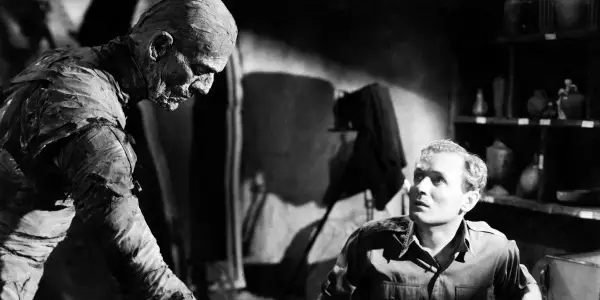
The Mummy is no rush to have the mummy (Boris Karloff) quickly rise from the dead, exacting the curse promised. Rather, the filmmakers frame the shot, allowing the subtle movements to defy logic. As we see the hand of the mummy reach for the scroll, there is an awareness of the pulsating anxiety viewers must have felt the first time watching the film. As the mummy leaves with the scroll, the young assistant plunges into madness, telling Whemple the mummy went for a walk. And while the characters think him mad, there is the feeling that the curse is not as clearcut as one would think.
Imhotep for the Ages
The opening is effective, establishing the curiosity surrounding the mummy, and the curse, but also layering on a heightened sense of anxiety and foreboding. It also is an exemplar example of the showmanship of the growing craft of film within the time. A standout is the The Mummy’s use of lighting, an aspect that is generally utilized well throughout the film’s entirety. There is an intensity it creates, especially in the film’s opening and later on as we hold tight to close- us of the mummy’s face.
As we leave the opening, we pick up right where we left off, yet a decade later, a new expedition now led by Whemple’s son Frank (David Manners). As he laments on the inability to make discoveries like his father due to an over saturation of explorers and archeologists, a knock at the door delivers to viewers once more the mummy – this time in the assimilated and regenerated form of Ardeth Bey. Once Boris Karloff walks into the room, there is a sense of wonder at the command he has of not only his character, but his movements and the room. He appears more elongated than ever, his fingers reaching toward the floor, elevating the power he has over his every movement.
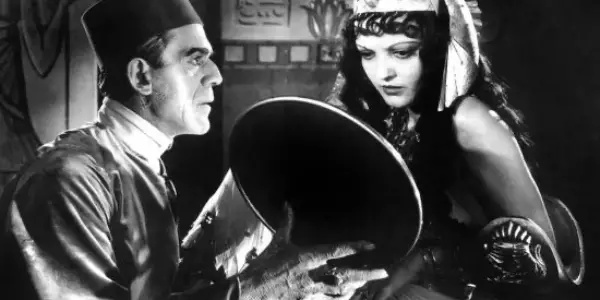
As he offers them a chance at the biggest discovery of their careers, and possibly the decade, the tomb of the Princess Anck-su-namon is discovered bring fame to the explorers, but also returning the long-awaited chance to Ardeth Bey to bring back to life his love. As he recites from the Scroll of Toth, Helen Grosvenor (Zita Johann) unwillingly makes her way to Ardeth, stopped only by the closed museum and Frank and his father.
Though confusion surrounding her strange behavior leaves an early mystery, the understanding of what is happening to her is quickly peeled away, maintaining the attention and the investment of the audience. As we discover she is the reincarnation of Anck-su-namon, The Mummy introduces itself once again, but not only as a horror movie but as a love story. The blending of genres gives the film a different feel, challenging unconditional and puppy love. As Ardeth pulls the reincarnated Anck-su-namon to life in Helen, he reminds her of their love and what he endeared to bring her back. Yet, as his hope of reunion is met with disgust, the idea of puppy love is not only challenged but transferred to Frank. As quickly as they were to love, so too are Helen and Frank.
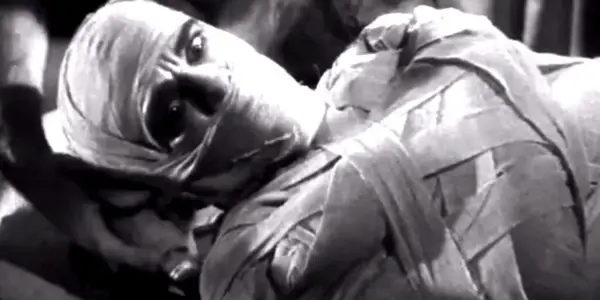
The horror transforms too with the genre-blending, murder, and bodies becoming the horror of rejection and defeat. Imhotep endeared being buried alive and a decade of wanting for an opportunity to bring his love back to him. He died for her, only to find that the well of love, when met with a new opportunity, did not run as deep as once thought. It is an emotional horror that is relatable in its essence of unrequited love. In a sense, it gives today’s “elevated horror” its own evolutionary roots.
The Craft
While wholly a success, The Mummy does have its awkward moments, Ardeth looking over a pool of water, giving him not only a portal to see others in the present time, but from the past as well. The framing the pool’s shape provides is disconnecting, especially during its first application. Yet, as awkward as it may feel, it speaks to the willingness of experimentation and commitment at the time of the film’s creation. It’s almost a playfulness with narrative structure, exploring new ways of connecting characters beyond barriers, as well as transcending time. While it is not the most successful aspect of the film, it is commendable all the same.
What was a success was the film’s leading man, Boris Karloff. Having made a name for himself with Frankenstein the year earlier, Karloff would solidify the power behind it with The Mummy. There is an incredible commitment by Karloff, who was actually wrapped as a mummy to heightened effect in the film. This is especially present in the scene where Imhotep is being buried alive, his eyes truly capturing the terror of the moment as the wraps are brought around his face. This scene in particular is one moment of The Mummy you may find yourself wishing you could have been a first time viewer in 1932, the horror and terror in the eyes piercing and horrifying.
Beyond the standout performance of Karloff is the incredible cinematography throughout the film from Charles J. Stumar, along with the combination of brilliant make-up from Jack P. Pierce (best known for his work in Frankenstein), truly making The Mummy as terrifying as possible, The fractures in Ardeth’s face are a cake-like composition of the regenerated mummy’s skin, speaking not only to the desert he was condemned to, but to the transformation he still has yet to complete. ever present, but forever condemned.
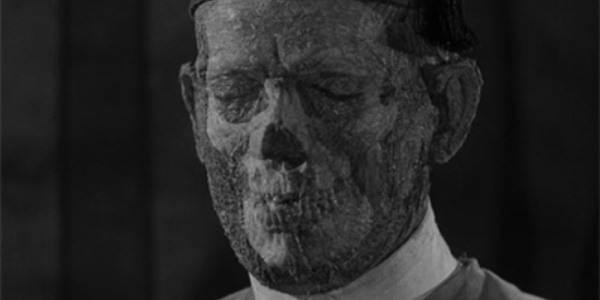
Technologically, the film is a staple of cinematic advancement, and never more so than in the film’s final moments. As Helen/Anck-su-namon prays to the statue of Isis to save her from the plans Ardeth is about to set into motion, Isis responds by setting the Scroll of Toth on fire, breaking the spell that has brought the mummy to life and delivered him immortality. As Imhotep begins to crumble to dust, his face slowly transitions on screen. While the camera does break away at points, when the lens is on Imhotep, you can see the face disintegrating to a bare skull. It is an impressive feat of the time, and to this day still holds wonder in its composition.
Conclusion
Celebrating its 90th anniversary this year, it seemed the perfect time to revisit this horror classic that would become the framework of mummy films that were to follow. And while it would spawn a loosely based remake in 1999, and a less successful one in 2017, The Mummy remains a classic staple of horror and the mummy genre, transforming itself to the immortality of cinematic history.
What are your thoughts on this classic? Let us know in the comments below!
Watch The Mummy
Does content like this matter to you?
Become a Member and support film journalism. Unlock access to all of Film Inquiry`s great articles. Join a community of like-minded readers who are passionate about cinema - get access to our private members Network, give back to independent filmmakers, and more.













